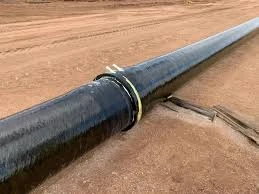
-
 Afrikaans
Afrikaans -
 Albanian
Albanian -
 Amharic
Amharic -
 Arabic
Arabic -
 Armenian
Armenian -
 Azerbaijani
Azerbaijani -
 Basque
Basque -
 Belarusian
Belarusian -
 Bengali
Bengali -
 Bosnian
Bosnian -
 Bulgarian
Bulgarian -
 Catalan
Catalan -
 Cebuano
Cebuano -
 China
China -
 China (Taiwan)
China (Taiwan) -
 Corsican
Corsican -
 Croatian
Croatian -
 Czech
Czech -
 Danish
Danish -
 Dutch
Dutch -
 English
English -
 Esperanto
Esperanto -
 Estonian
Estonian -
 Finnish
Finnish -
 French
French -
 Frisian
Frisian -
 Galician
Galician -
 Georgian
Georgian -
 German
German -
 Greek
Greek -
 Gujarati
Gujarati -
 Haitian Creole
Haitian Creole -
 hausa
hausa -
 hawaiian
hawaiian -
 Hebrew
Hebrew -
 Hindi
Hindi -
 Miao
Miao -
 Hungarian
Hungarian -
 Icelandic
Icelandic -
 igbo
igbo -
 Indonesian
Indonesian -
 irish
irish -
 Italian
Italian -
 Japanese
Japanese -
 Javanese
Javanese -
 Kannada
Kannada -
 kazakh
kazakh -
 Khmer
Khmer -
 Rwandese
Rwandese -
 Korean
Korean -
 Kurdish
Kurdish -
 Kyrgyz
Kyrgyz -
 Lao
Lao -
 Latin
Latin -
 Latvian
Latvian -
 Lithuanian
Lithuanian -
 Luxembourgish
Luxembourgish -
 Macedonian
Macedonian -
 Malgashi
Malgashi -
 Malay
Malay -
 Malayalam
Malayalam -
 Maltese
Maltese -
 Maori
Maori -
 Marathi
Marathi -
 Mongolian
Mongolian -
 Myanmar
Myanmar -
 Nepali
Nepali -
 Norwegian
Norwegian -
 Norwegian
Norwegian -
 Occitan
Occitan -
 Pashto
Pashto -
 Persian
Persian -
 Polish
Polish -
 Portuguese
Portuguese -
 Punjabi
Punjabi -
 Romanian
Romanian -
 Russian
Russian -
 Samoan
Samoan -
 Scottish Gaelic
Scottish Gaelic -
 Serbian
Serbian -
 Sesotho
Sesotho -
 Shona
Shona -
 Sindhi
Sindhi -
 Sinhala
Sinhala -
 Slovak
Slovak -
 Slovenian
Slovenian -
 Somali
Somali -
 Spanish
Spanish -
 Sundanese
Sundanese -
 Swahili
Swahili -
 Swedish
Swedish -
 Tagalog
Tagalog -
 Tajik
Tajik -
 Tamil
Tamil -
 Tatar
Tatar -
 Telugu
Telugu -
 Thai
Thai -
 Turkish
Turkish -
 Turkmen
Turkmen -
 Ukrainian
Ukrainian -
 Urdu
Urdu -
 Uighur
Uighur -
 Uzbek
Uzbek -
 Vietnamese
Vietnamese -
 Welsh
Welsh -
 Bantu
Bantu -
 Yiddish
Yiddish -
 Yoruba
Yoruba -
 Zulu
Zulu
frp ductwork
The Importance of FRP Ductwork in Modern Construction
In the realm of modern construction, the selection of appropriate materials plays a critical role in ensuring efficiency, durability, and safety. One material that has gained notable traction in recent years is Fiberglass Reinforced Plastic (FRP). Among its various applications, FRP ductwork has emerged as a preferred choice for a wide range of industries, including HVAC, chemical processing, and wastewater treatment. This article explores the benefits and applications of FRP ductwork, highlighting its significance in contemporary building projects.
What is FRP Ductwork?
FRP ductwork consists of duct systems made from a composite material comprising fiberglass and plastic resins, which are combined to create a lightweight but robust structure. This combination allows for high strength-to-weight ratios and excellent resistance to corrosion and environmental degradation. As industries seek more effective materials, FRP has become an alternative to traditional ductwork materials like metal or PVC, offering unique advantages tailored to specific applications.
Advantages of FRP Ductwork
1. Corrosion Resistance One of the most significant benefits of FRP ductwork is its ability to withstand corrosive environments. Traditional materials often deteriorate in the presence of chemicals or moisture, leading to maintenance issues and expensive replacements. FRP, on the other hand, can resist most chemical exposures, making it ideal for industries such as chemical manufacturing and wastewater management.
2. Lightweight and Easy to Install FRP ductwork is considerably lighter than metal ducting, which simplifies transportation and installation. Reduced weight also means less structural support is required, leading to potential savings in both material and labor costs. Seamless installation reduces installation time, allowing for faster project completions.
frp ductwork

3. Thermal Insulation FRP materials naturally possess insulating properties, which helps minimize energy loss in HVAC systems. This efficiency contributes to lower energy bills and promotes a more sustainable approach to building design. The enhanced insulation of FRP ductwork makes it suitable for both hot and cold air applications.
4. Design Flexibility FRP ductwork can be molded into various shapes and sizes, accommodating specific design requirements without compromising functionality. This versatility allows architects and engineers to integrate FRP seamlessly into unique building designs.
5. Longevity and Cost-Effectiveness The durability of FRP ductwork means it has an extended lifespan compared to traditional materials. While the initial investment may be higher, the long-term cost benefits from reduced maintenance, repairs, and replacements position FRP as a cost-effective choice.
Applications of FRP Ductwork
FRP ductwork is highly applicable across diverse sectors. It is widely used in industrial processes, including ventilation for chemical production and fume extraction systems. Additionally, its resistance to environmental stressors makes it suitable for marine applications, offshore platforms, and even residential heating and cooling systems.
In conclusion, FRP ductwork presents a compelling solution for modern construction projects that demand resilience, efficiency, and adaptability. As industries continue to evolve, the use of innovative materials like FRP will likely become more prevalent, shaping the future of building design and sustainability. Investing in FRP ductwork not only enhances the performance of HVAC systems but also supports the overarching goal of creating safe and durable infrastructures.









